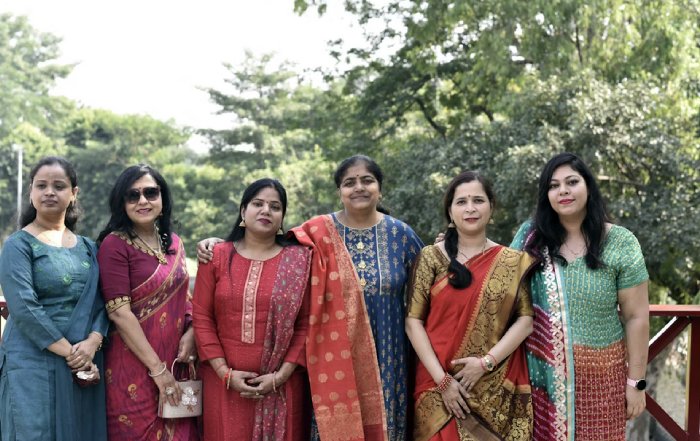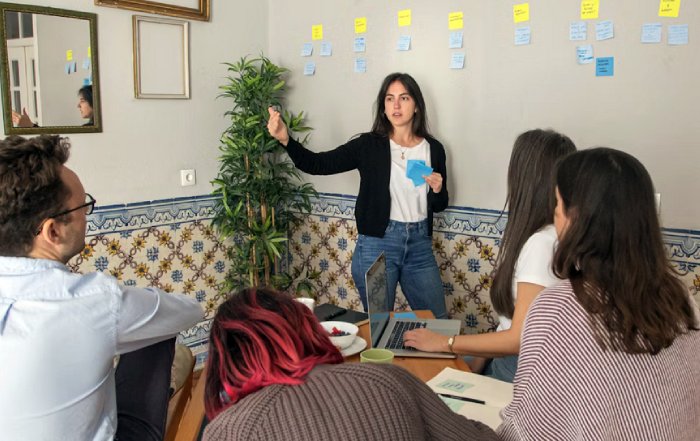How to Design a Life That Feels Intentional
Designing an intentional life in 2025 is no longer a niche aspiration reserved for a privileged few; it has become a strategic imperative for women navigating complex careers, evolving family structures, global uncertainty, and accelerating technological change. Across the United States, Europe, Asia, Africa, and beyond, women are reassessing what success means, questioning inherited scripts about work and lifestyle, and seeking a more integrated, values-driven way of living. For the community of HerStage, which brings together women who care deeply about leadership, lifestyle, career, and self-improvement, the question is not simply how to achieve more, but how to design a life that feels coherent, purposeful, and sustainable over the long term.
Intentional living is not about rigid control or perfectly optimized routines; rather, it is about aligning daily decisions with clearly articulated values, long-term aspirations, and a realistic understanding of one's constraints and opportunities. In a world shaped by remote work, hybrid careers, global collaboration, and ongoing social change, the women who thrive are those who develop the skills of self-awareness, strategic planning, and adaptive resilience. They approach their lives with the same seriousness and creativity that leading organizations bring to corporate strategy, and they recognize that personal well-being, meaningful relationships, and ethical impact are not secondary considerations, but central design principles.
This article examines how women can design an intentional life through five interconnected dimensions: clarity of values and vision, intentional work and career design, mindful lifestyle and health choices, purpose-driven relationships and community, and continuous learning and adaptation. It draws on insights from psychology, leadership research, and global business trends, while staying grounded in the lived realities of women in cities from New York and London to Singapore, Berlin, São Paulo, and Johannesburg. For readers of HerStage, the goal is to provide a practical yet reflective framework that can be revisited throughout different life stages, career transitions, and personal reinventions.
Clarifying Values and Vision in a Distracted World
The foundation of an intentional life is clarity about what truly matters, yet this is often the most neglected step. Many women find themselves following paths shaped by family expectations, cultural norms, or corporate incentives, only to discover years later that they have climbed a ladder leaning against the wrong wall. In 2025, the constant noise of social media, productivity culture, and comparison with curated online personas makes it even harder to hear one's own voice. Research from organizations like Harvard Business School suggests that reflection and self-awareness are core components of effective leadership and personal fulfillment, and these same principles apply to life design. Those who take time to articulate their values gain a powerful filter for decision-making and a compass for navigating uncertainty. Learn more about the importance of reflection in leadership through resources from Harvard Business Review.
Clarifying values often begins with honest self-inquiry. Questions such as "What experiences have felt most meaningful in my life?", "What am I unwilling to compromise on in the long term?", and "When do I feel most like myself?" can surface patterns that cut across career, relationships, and lifestyle. Many women find it helpful to journal over several weeks, noticing recurring themes rather than forcing an instant answer. Others use structured frameworks from positive psychology and coaching, such as identifying signature strengths, exploring personal narratives, or crafting a personal mission statement. For those seeking structured guidance, platforms like Greater Good Science Center provide tools on meaning, purpose, and well-being that can inform this exploration.
Once values are clearer, the next step is to translate them into a compelling yet flexible vision. An intentional vision is not a rigid five-year plan, but a narrative about the kind of person one wants to become and the impact one hopes to have. It might encompass professional ambition, creative expression, family life, health, contribution to community, and financial independence. For women who visit the HerStage guide section, this is where abstract aspirations begin to crystallize into a coherent life direction. A woman in London might envision building a portfolio career that combines consulting, teaching, and advocacy for gender equity, while a woman in Singapore might imagine leading a regional team in a technology company while carving out time for caregiving and artistic pursuits.
Importantly, an intentional vision must be grounded in reality without being constrained by current limitations. It should consider economic conditions, industry trends, and personal responsibilities, while also allowing room for growth and experimentation. Global organizations such as the World Economic Forum highlight how rapidly the skills landscape is changing and how careers are becoming more nonlinear, which reinforces the need for a vision that is both ambitious and adaptable. Exploring their insights on the future of work can help women align their life design with emerging opportunities and risks.
Designing Work and Career with Intention
Because work occupies so much of adult life, intentional living is impossible without intentional career design. In 2025, women across North America, Europe, Asia, and Africa are navigating new possibilities and pressures: remote and hybrid work models, the rise of AI and automation, flexible gig arrangements, and persistent gender gaps in pay, leadership, and investment. An intentional approach to career means moving from passive participation in these shifts to active strategy, where each role, project, or business venture is chosen for how it contributes to a broader life portfolio rather than just immediate income or status. For readers of the HerStage business section, this perspective resonates with the idea of managing one's career as a dynamic enterprise.
Intentional career design begins with aligning work with core values and strengths. A woman who values autonomy, creativity, and social impact might choose entrepreneurship, intrapreneurial roles, or mission-driven organizations, while another who values stability, technical mastery, and collaboration might thrive in established corporations or public institutions. Leading research organizations like McKinsey & Company have documented how women in leadership roles drive better organizational performance and innovation, particularly when they bring authentic values to their work. Insights from their reports on women in the workplace can help women evaluate which environments will genuinely support their growth and well-being.
Equally crucial is designing boundaries and structures that prevent work from overwhelming other dimensions of life. With digital tools enabling constant connectivity, many professionals struggle to disconnect, leading to burnout, reduced creativity, and strained relationships. Intentional professionals set clear work hours, create physical and psychological separation between work and home, and negotiate expectations with managers and clients. Global health authorities such as the World Health Organization have highlighted the health risks of chronic stress and overwork, reinforcing that sustainable productivity requires rest and recovery. Resources from the WHO on mental health at work can support women in advocating for healthier work cultures in the United States, Europe, and beyond.
For women who are not only building careers but also leading teams or organizations, intentional life design extends to intentional leadership. This means modeling inclusive, flexible, and humane practices, from offering remote options to supporting parental leave and caregiving responsibilities. The International Labour Organization provides data on gender equality, labor rights, and decent work, offering a global lens on how structural choices affect individual lives. Exploring their work on gender and work can inspire leaders to align their personal values with organizational policies, creating environments where intentional living is possible for many, not just a few.
Cultivating a Lifestyle that Supports Health and Presence
An intentional life is not solely defined by career achievements; it is equally shaped by everyday habits related to sleep, nutrition, movement, and digital consumption. These seemingly mundane choices determine energy levels, emotional stability, and cognitive performance, which in turn influence how effectively women can pursue their goals and show up for those they care about. The global community of HerStage, from Canada and Australia to South Africa and Brazil, increasingly recognizes that lifestyle is a strategic asset rather than an afterthought. The HerStage health section and food section reflect this holistic view, integrating wellness, nutrition, and sustainable living into broader conversations about success.
Intentional lifestyle design begins with understanding the science of well-being. Organizations such as the Mayo Clinic and Cleveland Clinic offer evidence-based guidance on sleep hygiene, cardiovascular health, stress management, and preventive care, which can inform personalized routines. Learning about healthy living recommendations helps women distinguish between wellness fads and practices that genuinely support long-term vitality. In Europe and Asia, where cultural traditions around food and rest differ, women can blend local wisdom with global research, creating routines that feel both authentic and effective.
Nutrition is a particularly powerful lever for intentional living. Rather than rigid dieting or short-term detoxes, an intentional approach focuses on sustainable, enjoyable patterns of eating that support physical health, mental clarity, and cultural connection. Global authorities like the Harvard T.H. Chan School of Public Health provide guidance on balanced diets, plant-forward eating, and the links between food, climate, and equity. Exploring their resources on healthy eating plate principles can help women in Italy, Japan, the United Kingdom, and beyond make informed choices that align with both personal values and planetary well-being.
Equally important is the intentional management of technology. In 2025, digital devices shape almost every aspect of life, from work and entertainment to relationships and self-image. Without conscious boundaries, constant notifications and algorithm-driven feeds can erode focus, sleep, and self-esteem. Initiatives from organizations like Center for Humane Technology emphasize the need for digital well-being and humane design, encouraging users to reclaim attention and agency. Learning more about digital wellness principles can support women in designing tech habits that serve their goals rather than hijack them. For the HerStage community, integrating mindful technology use with interests in lifestyle, fashion, and glamour means engaging online in ways that inspire rather than deplete.
Aligning Beauty, Fashion, and Self-Expression with Inner Values
For many women, beauty and fashion are not superficial concerns but vital languages of identity, creativity, and cultural belonging. However, when driven by external pressure, unrealistic standards, or constant comparison, they can become sources of anxiety and self-criticism. An intentional life invites a different relationship with appearance, one where style choices are expressions of inner values, comfort, and confidence rather than compliance with narrow norms. This shift is particularly meaningful for readers who explore the HerStage beauty section and fashion section, seeking to reconcile personal aesthetics with authenticity and sustainability.
Intentional beauty begins with a respectful understanding of one's own body and features, informed by science rather than myths. Trusted health and dermatology resources, such as the American Academy of Dermatology, offer guidance on skin health, sun protection, and evidence-based treatments, helping women distinguish between marketing claims and medically sound practices. Learning about dermatologist-approved skincare enables more conscious choices about products and routines, reducing waste and focusing on what genuinely supports long-term health. This approach aligns with a broader movement toward minimalism and quality over quantity, which resonates in fashion as well.
In fashion, intentionality manifests as choosing garments and accessories that reflect personal style, cultural heritage, and ethical priorities. Many women in Europe, North America, and Asia are turning to capsule wardrobes, second-hand shopping, and sustainable brands to reduce environmental impact while maintaining elegance and self-expression. Organizations like the Ellen MacArthur Foundation advocate for circular fashion and regenerative design, offering insights into how the industry can shift from linear consumption to sustainable systems. Exploring their work on circular fashion initiatives helps consumers understand the broader implications of their choices. For HerStage readers, this means that glamour and responsibility can coexist, and that each purchase can be a vote for the kind of world they wish to inhabit.
Crucially, intentional self-expression in beauty and fashion is inclusive of age, size, race, and ability. Global conversations around representation, led by media organizations and advocacy groups, are pushing industries to broaden their definitions of beauty. As women in countries from France and Sweden to South Korea and South Africa assert their right to be seen on their own terms, personal style becomes an act of self-determination. In this context, designing an intentional life includes curating media and brand influences that uplift rather than diminish, and supporting companies and creators whose values align with one's own.
Building Relationships, Community, and Support Systems
No intentional life is designed in isolation. Relationships with partners, family, friends, colleagues, and broader communities shape emotional resilience, opportunities, and sense of belonging. For many professional women, particularly those balancing demanding careers with caregiving responsibilities, the quality of their support networks can determine whether their life design remains aspirational or becomes sustainable reality. The HerStage women's section often highlights stories of solidarity, mentorship, and collaboration, underscoring that intentional living is a collective endeavor.
Intentional relationships begin with clarity about relational values: what kind of partner, friend, or leader one wants to be, and what one needs from others to thrive. This involves setting boundaries, communicating needs, and being willing to renegotiate roles as life circumstances change. Psychological research from institutions like American Psychological Association emphasizes the importance of secure attachment, emotional intelligence, and healthy conflict resolution in long-term relationship satisfaction. Exploring their resources on relationship health can help women across continents cultivate relational skills that support both autonomy and connection.
Community also plays a crucial role in intentional life design. Whether through professional networks, local organizations, online communities, or cultural and faith-based groups, women benefit from spaces where they can share experiences, exchange knowledge, and receive encouragement. Global initiatives such as Lean In, founded by Sheryl Sandberg, have demonstrated the power of peer circles in advancing women's leadership and confidence. Learning about peer support networks can inspire readers to create or join similar groups in their own regions, from Berlin and Amsterdam to Tokyo and Cape Town. For HerStage, fostering such communities-both digitally and in person-aligns with its mission to amplify women's voices and aspirations.
Intentional relationships also extend to mentoring and sponsoring others. As women advance in their careers and gain influence, choosing to support emerging talent, advocate for equitable policies, and use their platforms responsibly becomes part of their life design. This generative mindset enriches personal meaning and contributes to systemic change, ensuring that intentional living is not only about individual fulfillment but also about collective progress.
Practicing Mindfulness, Learning, and Continuous Adaptation
Even the most carefully designed life will encounter disruption: economic downturns, health challenges, family transitions, or geopolitical crises. Intentional living, therefore, is not a one-time plan but an ongoing practice of awareness, learning, and adaptation. In 2025, as artificial intelligence, climate change, and demographic shifts reshape societies, women who cultivate inner stability and a growth mindset are better equipped to navigate volatility. The HerStage mindfulness section and education section reflect this emphasis on inner work and lifelong learning as twin pillars of resilience.
Mindfulness practices, including meditation, breathwork, and reflective pauses throughout the day, help individuals stay connected to their values and respond thoughtfully rather than react impulsively. Scientific research from institutions like University of Oxford and Massachusetts General Hospital has documented the benefits of mindfulness for stress reduction, emotional regulation, and cognitive flexibility. Learning about evidence-based mindfulness programs can guide women in selecting practices that fit their cultural context and personal preferences. Whether practiced in a quiet corner of a New York apartment, a Berlin park, a Tokyo train, or a Johannesburg garden, mindfulness becomes a portable tool for intentional living.
Continuous learning is equally vital, particularly in the context of rapid technological and economic change. Platforms such as Coursera, edX, and LinkedIn Learning offer access to courses on leadership, data literacy, entrepreneurship, and creative skills, enabling women in every region to upskill and pivot as needed. Exploring online learning opportunities allows professionals to align their development plans with their long-term vision, whether that means transitioning into a new industry, launching a venture, or deepening expertise in a current field. For readers engaged with the HerStage career section, this mindset transforms uncertainty into a space for strategic reinvention.
Adaptation also involves regularly revisiting and revising one's life design. An intentional approach includes periodic check-ins-perhaps quarterly or annually-to assess whether current routines, commitments, and goals still align with evolving values and circumstances. Life stages such as becoming a parent, caring for aging relatives, relocating across countries, or recovering from burnout may prompt substantial redesign. Rather than viewing these shifts as failures of planning, intentional women treat them as invitations to refine their understanding of what matters most. This iterative process mirrors agile methodologies in business, where feedback and flexibility are integral to long-term success.
Bringing It All Together: HerStage as a Partner in Intentional Living
Designing a life that feels intentional is both a deeply personal journey and a shared cultural project. It requires self-knowledge, strategic thinking, courage to deviate from default paths, and the humility to adjust course when reality demands it. For women around the world-from the United States and Canada to Germany, Singapore, Brazil, and South Africa-this work unfolds within specific economic, social, and cultural contexts, yet the underlying questions are remarkably similar: How can I live in alignment with my values? How can I contribute meaningfully while caring for my own well-being? How do I integrate ambition, relationships, creativity, and rest into a coherent whole?
HerStage exists as a companion to these questions, curating stories, insights, and practical guidance across lifestyle, leadership, self-improvement, business, health, and more. By highlighting diverse experiences and expert perspectives, it invites each reader to craft her own definition of success and to design a life that is not only productive, but also intentional, humane, and deeply her own. As the world continues to change, the women who thrive will not be those who follow a single formula, but those who continually return to their inner compass, make deliberate choices, and shape their days-and their futures-with purpose.










